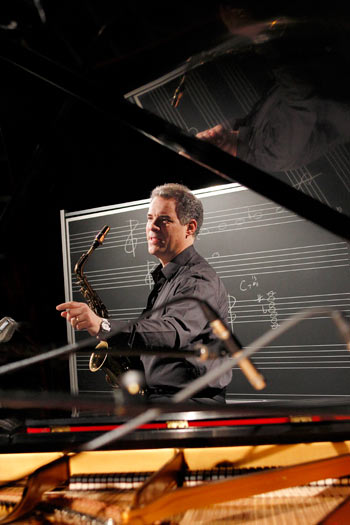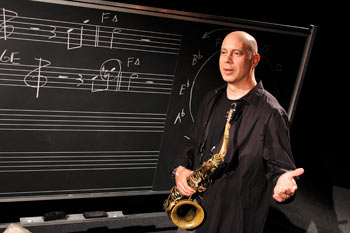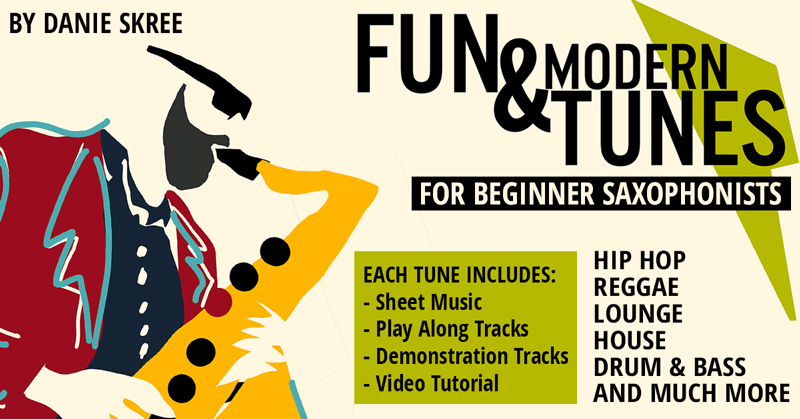Tone Building Exercises Used By Many of Jazz Music’s Saxophone Masters

Someone once told me that, when speaking to Cannonball Adderley about tone after seeing him with Miles’ band, which included John Coltrane (!), he mentioned that they were seeking an “inspired tone”. Safe to say, they found it.
An inspired tone, along with great time, are two traits that all masters have in common. No two saxophonists have exactly the same tone, but masters do seem to have at least a few common qualities:
Relative color balance– Some masters emphasize darker partials in their tone, others more brilliant ones, but there’s a relative balance that creates a “full” and attractive quality. And a master’s tone color is often influenced by saxophonists that they admired and emulated. For example, Coltrane’s tone was influenced by Dexter Gordon, Sonny Rollins’ by Coleman Hawkins, Cannonball’s by Benny Carter.
Center or Core– A centered tone provides intensity that gives tone more impact and presence. Don’t confuse intensity with volume. Masters have intensity in their sound at any volume, in large part due to center. Without center, even a very loud saxophonist will most likely have little intensity.
Nuance– Masters are able to shape their tone, actually changing it to project a certain feeling. Technically, this is mostly accomplished by altering the shape of the oral cavity, which can change tone color, or varying jaw pressure, which can increase or decrease focus (e.g. subtone).
Personality– From an artistic standpoint, this is clearly the most important facet. It’s the ultimate goal. However, simply being unique doesn’t necessarily equate to personality, or for that matter, quality. Having a mature, personal sound is a complicated amalgam of influence and self-reflection that normally doesn’t happen overnight.
The following video excerpts are from The Jazz Conception Company course “Jazz Saxophone“, with Walt Weiskopf and I splitting 6 lessons.
Tone Color with the Overtone Exercise
One of the best exercises to develop tone color is the overtone exercise, as it allows you to match normally fingered notes with much fuller sounding overtone fingerings. Here’s Walt taking about this exercise in the tenor key of Bb.
Excerpt from Jazz Saxophone Course - Lesson 4 from The Jazz Conception Company on Vimeo.
Download PDF Sheet Music for Tone Color with the Overtone Exercise
Nuance through Emulating Masters
The very best way, and probably the only way, to realize the full potential of your tone is by emulating masters. They’ve already figured out how to have all the qualities mentioned above, so coming reasonably close to their concept of sound goes a long ways towards having a great tone. In this clip, I demonstrate certain qualities of Cannonball’s tone by playing bits and pieces of his rendition of “Stars Fell on Alabama”.
If you’re an alto player, listen to this example and play through it a few times going for Cannonball’s tone quality and nuance. Beyond tone considerations, you’ll also notice that there are grace notes, bends, drops and subtone that add to his personal approach.
Excerpt from Jazz Saxophone Course - Lesson 6 from The Jazz Conception Company on Vimeo.
Download PDF Sheet Music for Nuance through Emulating Masters Exercise
Centered Tone through Emulating Masters
One great example of a centered tone is Sonny Stitt, one of the only saxophonists in jazz history to have a significant impact on both the alto and tenor. Walt has written an etude highlighting Stitt’s style. The etude is based on “Between the Devil and the Deep Blue Sea”, and you’ll hear that Walt demonstrate’s Stitt’s style masterfully. Once again, listen to this a few times and then play along. Check out Stitt’s “New York Jazz” recording, which serves as a model for this etude.
Excerpt from Jazz Saxophone Course - Lesson 5 from The Jazz Conception Company on Vimeo.
Download PDF Sheet Music for Centered Tone through Emulating Masters Exercise
 Our Jazz Saxophone course includes 6 video lessons, 8 play alongs with etudes, a digital music book, and an iPad app, which allows you to study your course without the internet. You can also study your course online with any computer. Music appears in your key as it is discussed or demonstrated, or can be studied on its own like any book. To learn more, please go to www.jazzimprovisation.com
Our Jazz Saxophone course includes 6 video lessons, 8 play alongs with etudes, a digital music book, and an iPad app, which allows you to study your course without the internet. You can also study your course online with any computer. Music appears in your key as it is discussed or demonstrated, or can be studied on its own like any book. To learn more, please go to www.jazzimprovisation.com








March 28, 2013 @ 5:59 pm
Dealer Code not working, received message: Coupon code “225511” is not valid.
March 28, 2013 @ 6:21 pm
Same here. Code doesn’t work.
March 28, 2013 @ 10:15 pm
Hey guys, if you’re having problems with the discount code, contact me via the Contact page and I’ll forward your email to Jim so he can get it sorted out for you.
Thanks!
Doron
April 25, 2013 @ 9:56 am
Thanks for posting these Doren.
April 25, 2013 @ 3:05 pm
My pleasure! (spelled “Doron”, btw). :)
July 13, 2016 @ 1:20 am
Great stuff here. And indeed: Stitt was one of the few classic masters and major influences on both alto and tenor. Another superb player who even added the soprano to the range (Sound Pieces, the shadow of your smile!!!) is Oliver Nelson. I find modern players (post 80s) to have a sound an setup that prefers allroundness and easiness (of playing) above personal sound. There are exceptions, but not too many.